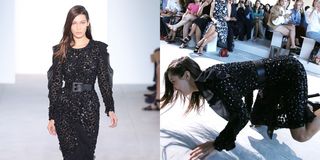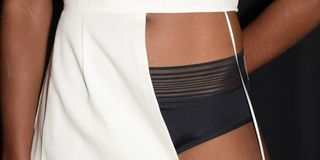I don’t remember a time when I wasn’t a Target clearance shopper. You see, my parents met at Target (they both worked there in the 70s, and my Mom still works there!), so Target is in my blood.
At a very young age, I remember getting so excited when I would find things on sale, and shopping the day after Christmas was a family tradition.
Find latest Walmart Coupons 20 OFF any purchases with Walmart promo codes August 2016. Save up to 20 OFF any purchase w Walmart coupon codes now. Up to 20% OFF on Clothing at Walmart with FREE Shipping included for orders of $35 or more! Choose hot items of Holiday
Now as an adult, I have taken shopping Target clearance to a whole new level. It used to be that 50% off was when I bought, but not anymore. I typically wait for 70% off – or 90% off when it happens! If I miss something at 50% off, I figure I didn’t need it and there’s always another sale. I am committed to saving as much money on gifts and items for my family as possible.
The last Thursday in July is typically the bi-annual big toy clearance (a huge portion of toys go 70% off to make way for Christmas toys). In honor of that, I thought I would share my 10 tips for shopping Target clearance.
- Understand how things get marked down: Most items will be marked down 30% off/50% off/70% off. Mark downs typically happen every two weeks (with the exception of seasonal items, which get marked down much faster.) Popular items (like food, beauty products and electronics) will start at 15% off. Holiday and seasonal items (Valentine’s, Easter, Summer, Back-to-School and Christmas) will go down to 90% off – YEOW!
- Pay attention to deal cycles: The BIG clearance mark-downs are cyclical. For instance, the big toy clearance happens at in late January and the end of July/early August (on a Thursday) every year. Mark your calendar and start paying attention to mark-downs prior to the sale.
Learn when your store does mark-downs: Do certain departments get marked down on certain days? Pay attention. When you are in the store and you see mark-downs happening (usually in the morning), jot down the day. (Check out Kayla Aimee’s post for a general mark-down calendar by day.)
- Look on back end-caps: You will find most store clearance on the back end-caps. I always make it a point to walk up and down all the back aisles to monitor what has been marked down.
- Don’t just look on back end-caps: I know I just said look on back end-caps, which is true. Most clearance will be on back end-caps, this doesn’t mean you won’t find clearance in aisles, so it is good to check the regular aisles too. This past week, I found lots of photo albums on clearance, as well as canned pineapple marked 50% off in the canned good aisle (which is considerably better than the 15% off that I usually see food marked down to).
- Look at how low the price is: There is misinformation out there that if a price ends in 4, that this is the lowest the price will go. This is not true. You need to look at if the item is marked down 30% off, 50% off or 70% off. If the item is marked down to 70% off (and isn’t seasonal) then that is as low as it will go. Clearance stickers also say in the top right corner how low the mark-down is, just in case you aren’t good at mental math!
Read this excellent postby All Things Target for more on this.
- Signs aren’t always right: Just because I sign says 30% off, doesn’t mean everything in the area is 30% off. For instance, even though this display in jewelry/accessories said 30% off, I found purses as high as 70% off in that area. That’s why the signs say X% off or more.
- Shop at Target often: Of course, visiting Target often will ensure you learn your store and don’t miss any great deals. There is a Target right on the way to my kids’ day care, so I often stop in after work before picking them up.Visiting multiple Targets will also give you a better sense of the stock and where the best store to shop is when a big clearance sale hits. Nashville has two Targets that I regularly monitor. For the summer 90% off sale, I knew that one store had 5 times the clearance of the other one I go to, so that is where I headed at 8 a.m. last week Tuesday. It was definitely worth the trip as I got $725 worth of stuff for $75.
- Read Target blogs: Target blogs are a great way to monitor the best deals available. I loveAll Things Target and Totally Target. Some frugal blogs, like Money Saving Mom, also share Target deals.
- Follow Target blogs on Facebook: Often times I find that I learn of Target sales faster through my Facebook feed. I especially love the All Things Target Facebook page. The community is super active and always sharing what they are finding at their stores. This is SO helpful because then you know what to look for.
Additional tips when shopping clearance items (at any store):
- Budget: Spending lots of money that is outside the parameters of your budget is never wise, so be sure to pay attention to your spending.
- Review your receipt: Sometimes an item that is supposed to be on clearance will not scan properly, so be sure to pay attention when the cashier is ringing up your order AND review your receipt after the sale is complete.
- Return what you don’t need: Sometimes, I get a little crazy and will overbuy during a major clearance sale (like last week’s 90% off summer clearance). My philosophy is to snatch up what I think I want, evaluate what I want when I get home and return what I don’t need. Even if it was only $1, if you don’t need the item, the $1 is better in your bank account.
- Storage: When shopping clearance, it is important to have a place to put what you buy (especially when stockpiling gifts).
- Stay organized: Overspending and buying things you don’t need is not good! I keep a spreadsheet of all the people I buy gifts for and what I have bought so I don’t forget. Over-buying doesn’t end up saving any money.
Three final tips for saving money at Target
- Sign up for the Target debit card: This is NOT a credit card. It is a debit card just for Target that syncs with your bank account, AND you save 5% off on all purchases. I love this. Since I am shopping at Target anyway, why not save an additional 5% off? I buy a lot of groceries at Target too because you save more money on them when you use your Target card. The only thing to keep in mind is that it takes a few days for the money to come out of your account.
- Download the Target “cartwheel” app: It has tons of coupons in it that can be stacked with sales and manufacturer’s coupons, making for some awesome deals.
- Price-match to Amazon: Target will price-match anything in store to Amazon. You just need to take the item to the service desk, along with the Amazon app showing the price and bam! they will match it. Even better, you can still use your Target red card to save more money.

















